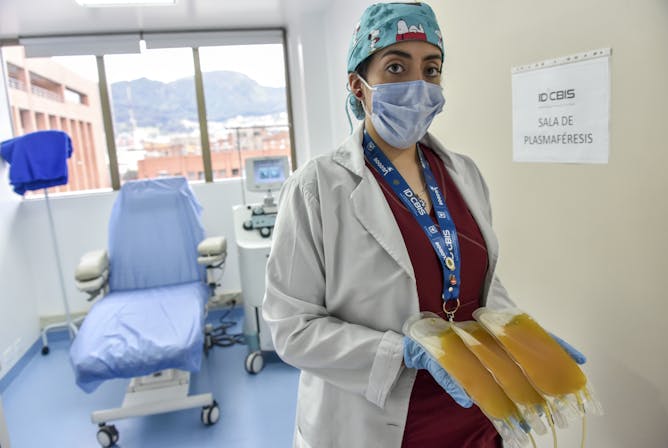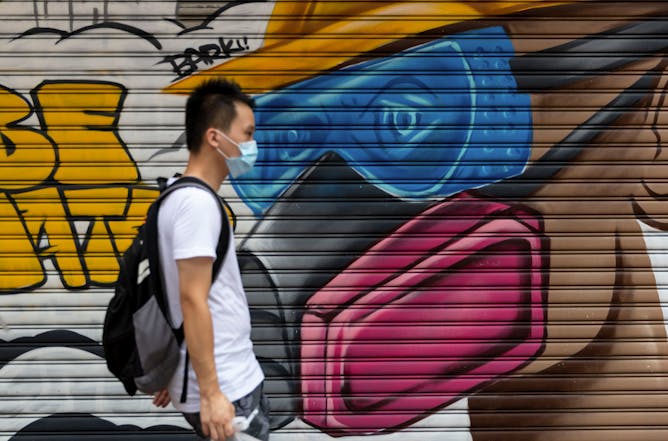
Extreme wildfires can fuel tornadoes, creating erratic and dangerous conditions for firefighters.
David McNew/Getty Images
Charles Jones, University of California, Santa Barbara; Leila Carvalho, University of California, Santa Barbara
Persistent heat waves and dry lightning are part of the problem. For firefighters, the erratic behavior gets dangerous quickly.
|

A nurse holds plasma donated by a man who recovered from COVID-19.
Guillermo Legaria /Getty Images South America
Jeffrey M. Sturek, University of Virginia
In the blood of COVID-19 survivors are antibodies that can defeat SARS-CoV-2. Researchers are testing whether these antibodies can be collected and injected into others to save them from the virus.
|

Is it possible to get COVID-19 twice?
May James/AFP via Getty Images
Megan Culler Freeman, University of Pittsburgh
Reports describe a Hong Kong man who was reinfected with the coronavirus after returning from Europe. Does that mean he wasn't immune after the first infection?
|